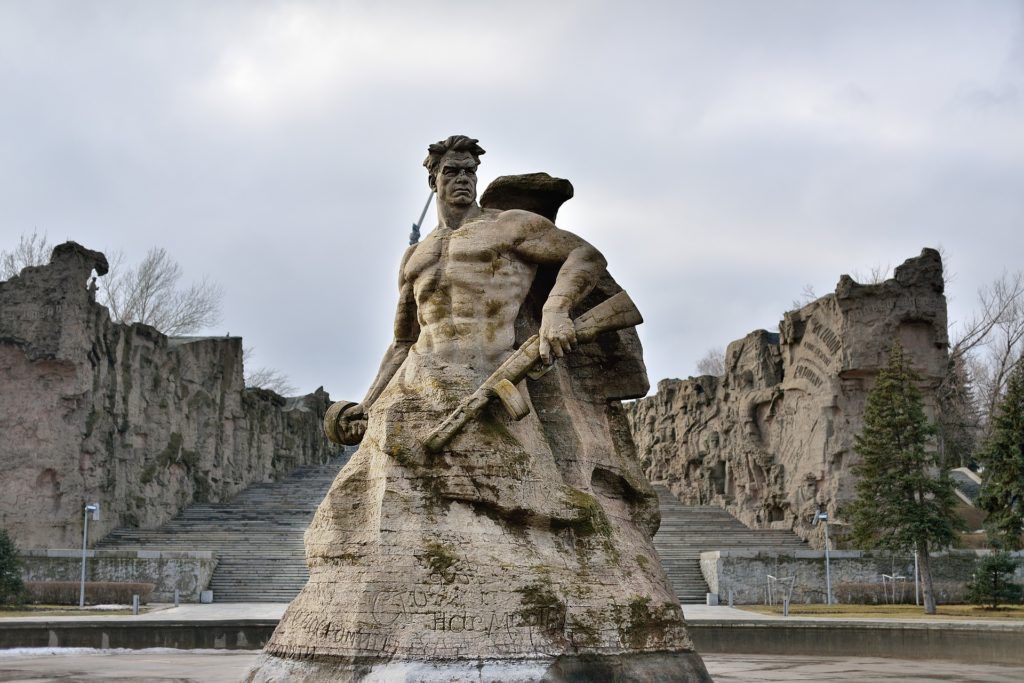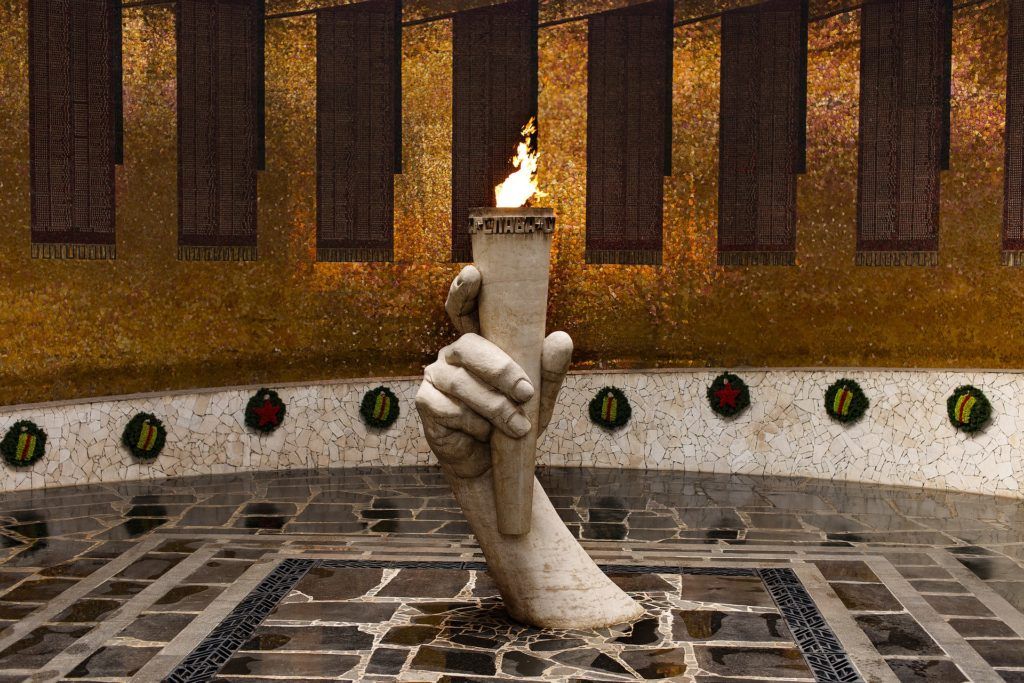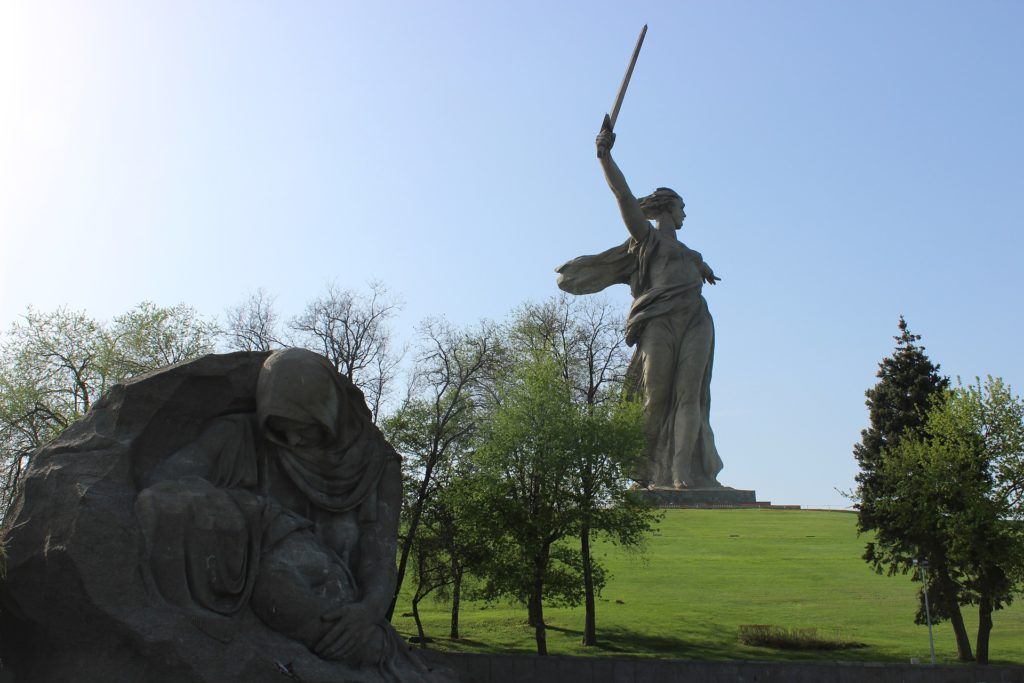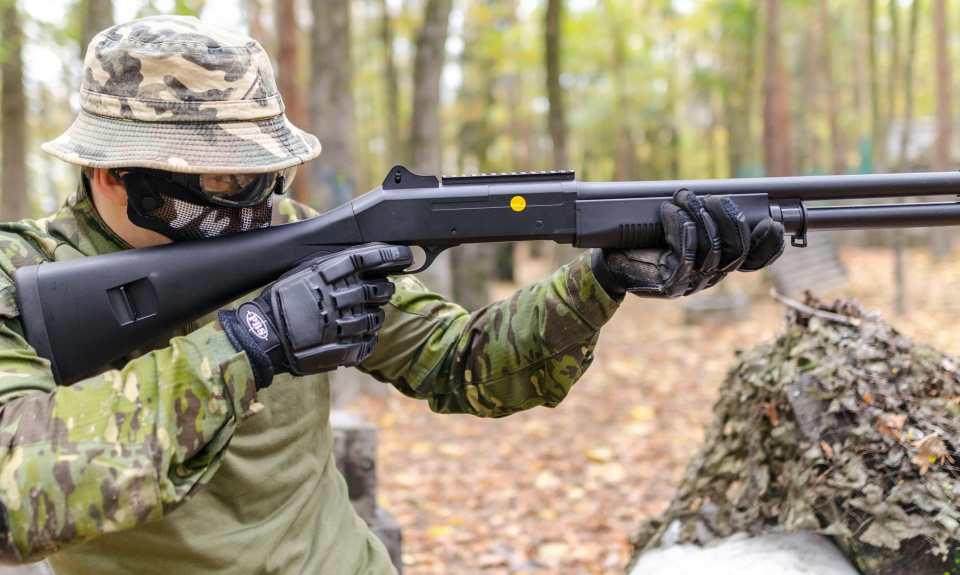The best museums in Volgograd 2022
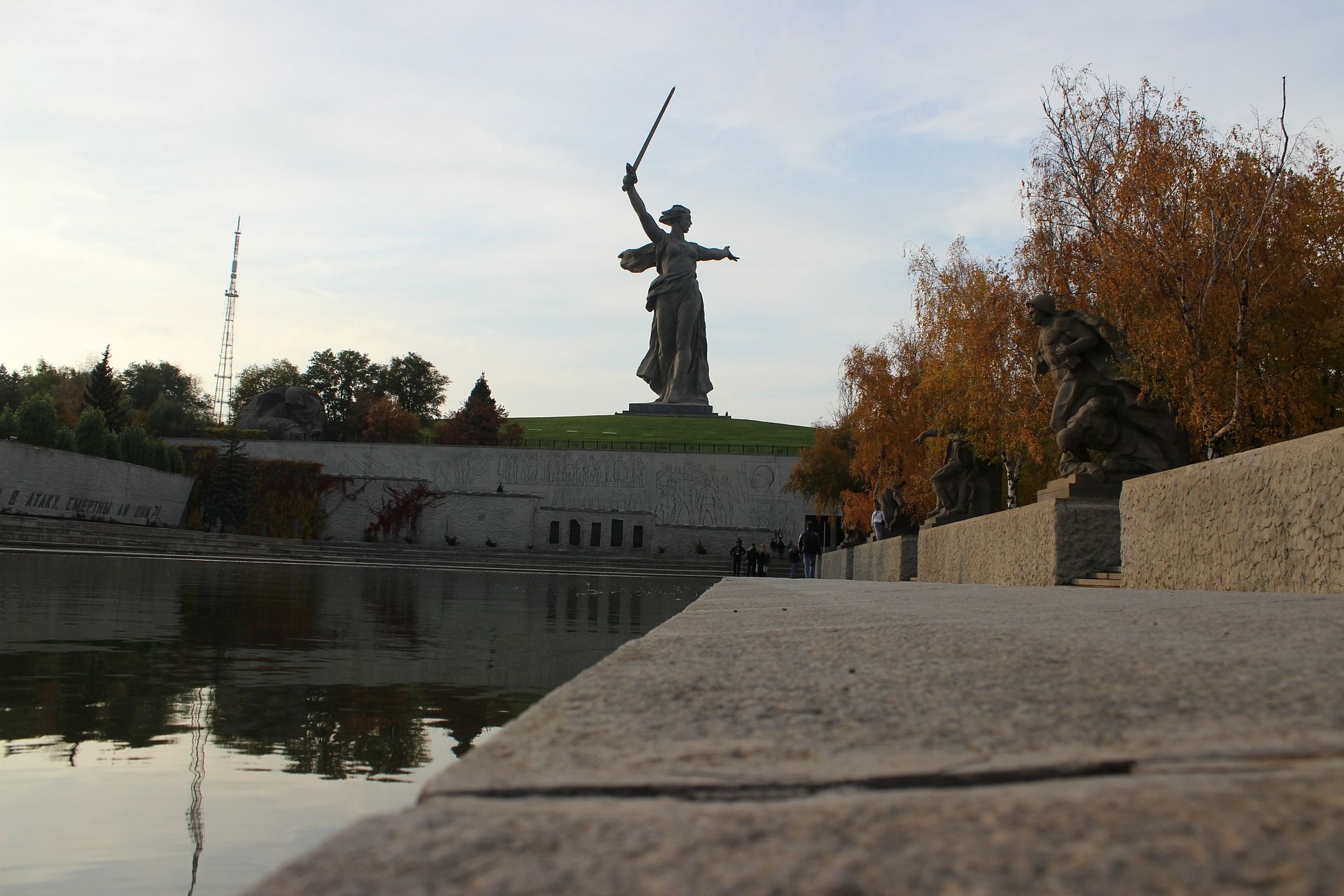
The museum is an integral part of educational activities. What can parents give a child besides love, care, upbringing? Traditions, acquaintance with cultural heritage. The best museums of Volgograd can help with this.
Content
- 1 Why go to museums?
- 2
State Historical and Memorial Museum-Reserve Battle of Stalingrad
- 2.1 entrance area
- 2.2 Alley of pyramidal poplars
- 2.3 "Stand to the death!"
- 2.4 Ruins of Stalingrad
- 2.5 Heroes Square
- 2.6 Hall of Military Glory
- 2.7 Sorrow Square
- 2.8 Mamaev Kurgan - a memorial complex "To the Heroes of the Battle of Stalingrad"
- 2.9 Monument "Motherland is calling!"
- 2.10 Architectural complex "Battle of Stalingrad"
- 2.11 Ticket price
- 2.12 Excursions
- 2.13 Contact details
- 3 Old Sarepta - architectural, historical and ethnographic museum-reserve
- 4 Volgograd Planetarium
- 5 Einstein Entertaining Science Museum
Why go to museums?
We are a continuation of our ancestors. You can't climb the next step without climbing the previous one. Peoples that preserve their culture, traditions, spiritual heritage are strong peoples. A person who realizes at what cost victory was won will not be the first to raise the hatchet. Historical places are areas of the planet where time breathes, where you can scoop up living water from the river of life.
A visit to a museum can become an outlet that will give new strength, make you take a different look at what is happening and replenish your knowledge base.
Patrons seeking to preserve and develop culture opened theaters, museums, and created cultural centers.
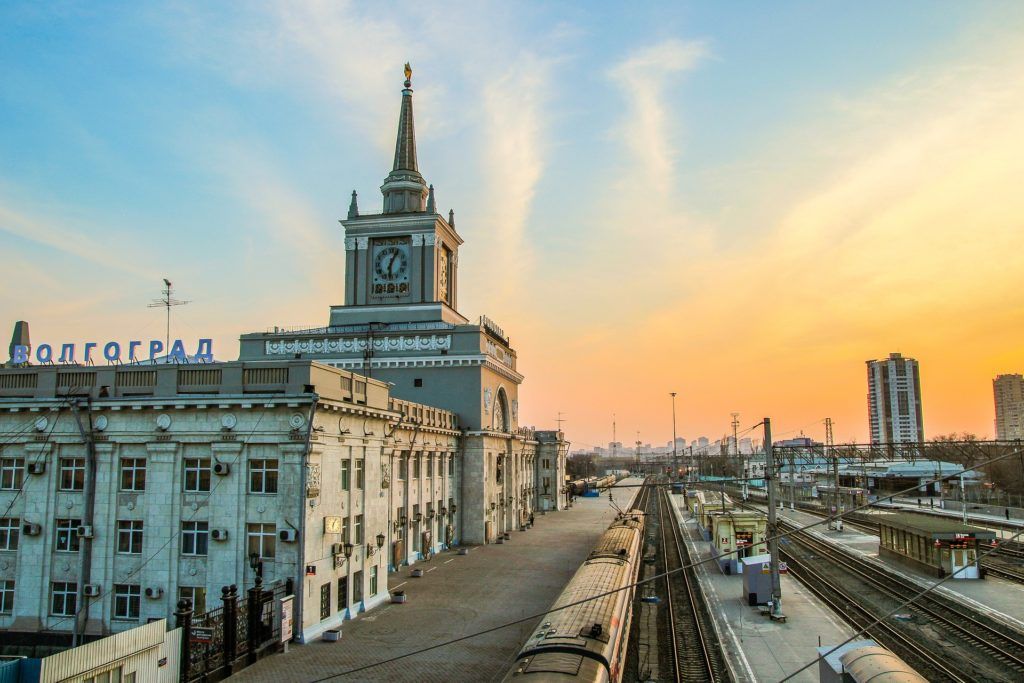
Volgograd is a hero city with a great and rich past, a fascinating present, a city of military glory.
In 1941, an offensive was launched against Stalingrad by Colonel General Paulus and his sixth German army.
On July 19, the Stalingrad Front was created to block the southern front from the fascist invaders. In 1942, on July 17, a day that will forever be preserved in national history, the Battle of Stalingrad began. For 200 heroic days, the army and navy, together with the inhabitants of the city from 50 thousand volunteers, heroically fought for the Motherland. The factories of the city produced guns, Katyushas, tanks and mortars. Only in January 1943, the invaders were surrounded, and Paulus surrendered.
The price of victory was the lives of 1,500,000 people, our compatriots. The memory of the feat of the participants in the Battle of Stalingrad is carefully preserved by the Russians.
State Historical and Memorial Museum-Reserve Battle of Stalingrad
The main memorial of the city, consisting of a museum and a panorama.
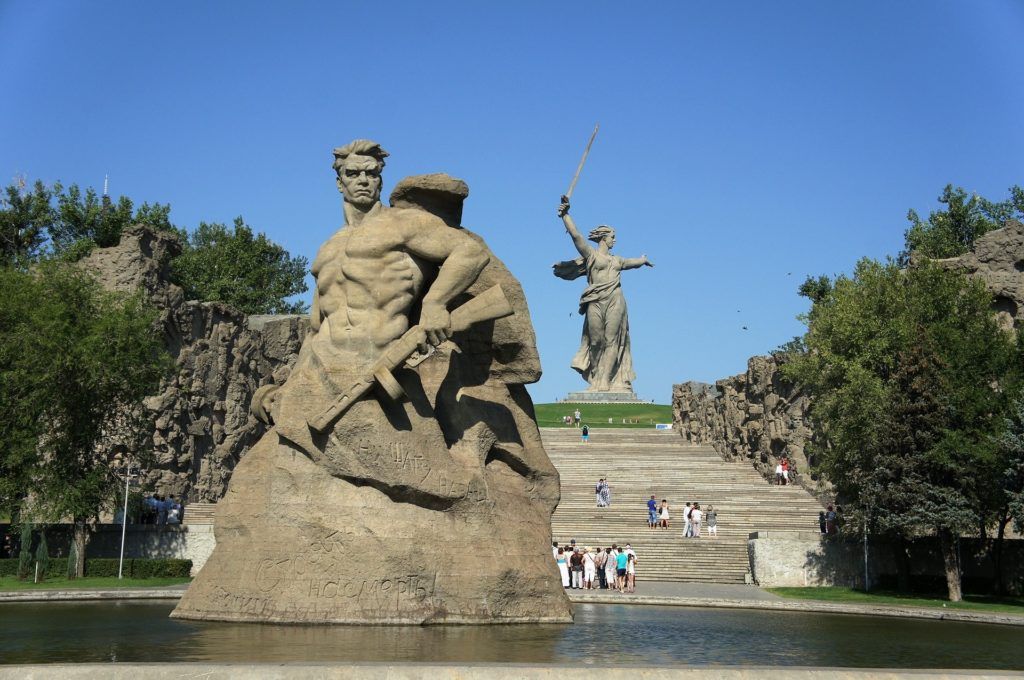
entrance area
The composition "Memory of Generations" plays the role of an introductory ensemble. The background is represented by the ruins of the walls; against their background, a mourning procession of generations takes place, which ascends the mound to honor the memory of the heroes who died for the Motherland. Pedestals with the earth of the cities-heroes of the Great Patriotic War are installed on the square.
The left side of the entrance is occupied by a spacious park, which was founded in honor of the heroes of Stalingrad.
Alley of pyramidal poplars
More than 200 meters of a paved alley, fenced on both sides with stately trees standing at attention, opens up a view of the Memorial Complex.
"Stand to the death!"
The name of the square, in the center of which, "risen" from the Russian land, a hero-warrior. The fundamental figure, more than 16 meters high, marks the strength of the heroic Russian people and its invincible power. The sculpture is surrounded by a large reservoir, symbolizing the Mother Volga. The words from command order No. 227 are carved on the base: “Not a step back!”, “Every house is a fortress!”, “Stand to the death!”
Ruins of Stalingrad
Walls more than 17 meters high, on both sides of a wide staircase, on which inscriptions were drawn as if with bayonets from rifles, fragments of shells, the blood of fighters, were symbolically destroyed by bombing and shelling. The distance between the walls gradually narrows and leads to the panorama. The territory is sounded with the natural sounds of battles, bursts of machine guns, Levitan's voice about the reports of the Information Bureau, wartime songs.
Heroes Square
A huge pool with an area of 2200 square meters is framed on the left by a banner sculpture with the words: “The iron wind hit them in the face, and they all went forward, and again a feeling of superstitious fear seized the enemy: did people go on the attack? Are they mortal?!"
On the right are sculptural groups that personify the heroes of the battle in the frozen motifs of the battle:
- dying, but not surrendering position, warriors;
- the nurse carries the wounded in battle;
- a marine soldier with grenades tied in both hands, some of which he took from a brother-soldier who was killed nearby, resolutely goes to a fascist tank moving towards him;
- the commander, wounded and supported by his comrade-in-arms, gives his last, dying commands;
- a fighter intercepts a banner from a slain comrade;
- victory.
The far part of the square is closed by a wall with a capsule inside. The capsule contains an appeal to posterity and excerpts from the orders of the Supreme Commander-in-Chief Stalin I.V.
Hall of Military Glory
In the center of the hall is the symbolic hand of the deceased with a torch and Eternal Flame.
The unique decoration will interest the visitor with its symbolism and historical content. The melody of Schumann's "Dreams" constantly sounds in the hall.
Sorrow Square
The famous sculpture "Mother's Sorrow" multiplies sorrow along with two graves:
- fraternal burial of 34509 soldiers;
- the grave of Marshal of the Soviet Union, Twice Hero of the Army Commander of the 62nd Army Chuikov V.I.
Mamaev Kurgan - a memorial complex "To the Heroes of the Battle of Stalingrad"
62nd Army under the command of Chuikov V.I. heroically held the defense for 140 days for the key point of the military Stalingrad. Holding a position on Mamaev Kurgan meant then retaining Stalingrad. The battles were not for life, but for death. The shells rained down, the fighters died. With the advent of spring in 1943, grass did not grow on the land burned by military guns, flowers did not bloom. Each square meter contained 500-1250 fragments.
Visitors to the museum are offered to climb to the top of the Kurgan along the alleys, places of fierce battles. During the ascent, one involuntarily embraces the atmosphere of a desperate battle for the Victory and great sorrow for the dead.
Monument "Motherland is calling!"
The colossal structure, 52 meters high and weighing 8,000 tons, symbolizes the sword handed down by the Mother to her sons - weapons in the holy war against the fascist invaders.
Museum visitors will be interested to know who became the prototype and what two extensions the monument has.
The memorial statue is visible for tens of kilometers and personifies strength, determination, invincibility. A large steel sword 33 meters long cuts the sky like a bird soaring to freedom and calling for itself.
All the power of the heroic deed of Stalingrad and the grief of the Russian people were transferred to the descendants in the memorial complex, which began to be created in 1945 and was opened on October 15, 1967.
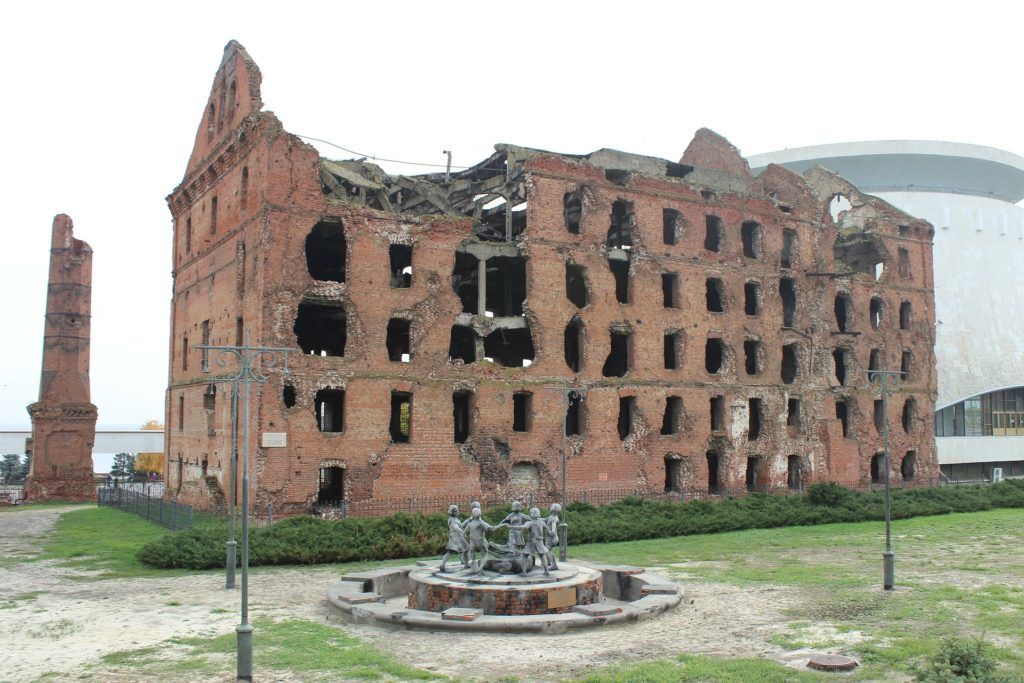
Tours are held daily, in the mode: 9-00 - 18-00. Entrance is free for all categories of visitors.
To request a tour ☎ 8-8442-55-01-51 (additional dialing 1010).
Architectural complex "Battle of Stalingrad"
13th Guards Rifle Division under the command of Rodimtsev A.I. landed in September 1942 exactly at this place, where the building was built from two levels:
- museum, administration, depository;
- panorama rotunda.
The central square is a permanent exposition of military equipment. Historical monuments of the federal level “The ruins of the mill named after. Grudinin", "Pavlov's House", Rodimtsev's Wall" are also part of the memorial and cultural complex of the State Panorama Museum "Battle of Stalingrad".
The extraordinary history of the creation of the ensemble with the phased commissioning of the complex from the panorama "The defeat of the Nazi troops near Stalingrad" to the Triumphal Hall and the diorama will interest a visitor of any age.
The 40th anniversary of the Great Victory was marked by the grand opening of the Stalingrad Battle Museum.
The panorama "The defeat of the Nazi troops near Stalingrad" has become a symbol of the revival of Stalingrad as a monument of great cultural heritage.
The group of authors for creating the panorama included the best artists, honored artists, laureates of State Prizes.
- a symbol of the victory of the Soviet people in the Great Patriotic War;
- eternal memory to the heroes who died for the Victory;
- scale and uniqueness;
- virtual tours and exhibitions on the site;
- the ability to watch thematic films on the site in the cinema hall;
- the department of search work maintains an accounting file, patronizes the fate of the participants in the Battle of Stalingrad;
- thematic scientific conferences are held, a military-historical library and a reading room are functioning;
- the museum holds meetings of veterans, Conscript Day, student internships;
- The museum has its own collections, including numismatic and pictorial sources.
- no.
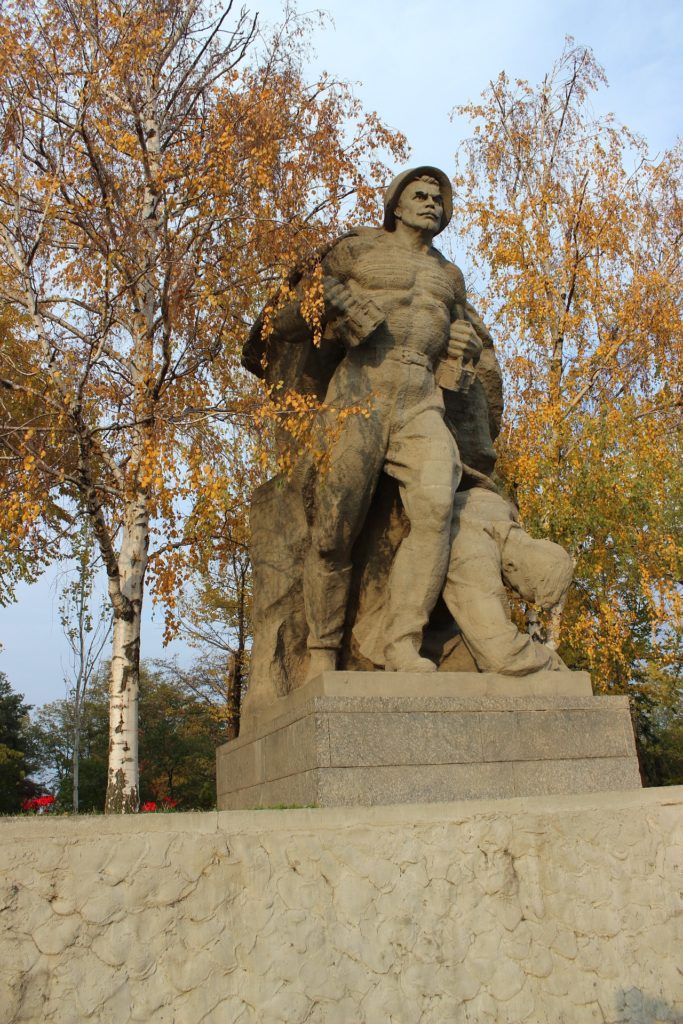
Ticket price
| Category of citizens | Entrance ticket, cost, rubles |
|---|---|
| Citizens of the Russian Federation | 250 |
| Citizens of the Republic of Belarus | |
| Foreign citizens | |
| Students of the Russian Federation | 150 |
| Full-time students of higher and secondary specialized educational institutions of the Russian Federation and the Republic of Belarus | |
| Students under 16 | is free |
Excursions
Excursion service is carried out in groups, with the obligatory presence of an entrance ticket and exclusively by appointment.
☎ 8 8442-550-083 (Tuesday to Sunday)
Groups for excursions are formed as part of
- from 10 to 30 people during the period October-March;
- from 15 to 45 people during the period April-September.
| Category of citizens | Entrance ticket, cost, rubles per person | Individual excursion service, rubles per group (up to 5 people) |
|---|---|---|
| Citizens of the Russian Federation | 150 | 2000 |
| Citizens of the Republic of Belarus | ||
| Foreign citizens | 400 | 4000 |
| Students of the Russian Federation | 100 | - |
| Full-time students of higher and secondary specialized educational institutions of the Russian Federation and the Republic of Belarus | - | |
| Students under 16 | 100 | - |
Contact details
Volgograd, Central district, st. named after Marshal Chuikov, 47
http://www.stalingrad-battle.ru
- ☎ 550-083 Panorama Museum "Battle of Stalingrad",
- ☎ 550-151 (ext. 1104) Memorial and History Museum,
- ☎ 386-067; 550-151 (ext. 1401) Museum "Memory",
- ☎ 550-151 (ext. 1010) Mamaev Kurgan
Old Sarepta - architectural, historical and ethnographic museum-reserve
The museum is not only a cultural center, but also a research base, an architectural ensemble with twenty-three monuments of the Federal level of the 18th - 19th centuries. The history, which goes back to the reign of Catherine II and the colony under the leadership of the headman Daniel Fiko in the Astrakhan province, turned the settlement into the spiritual center of southern Russia.
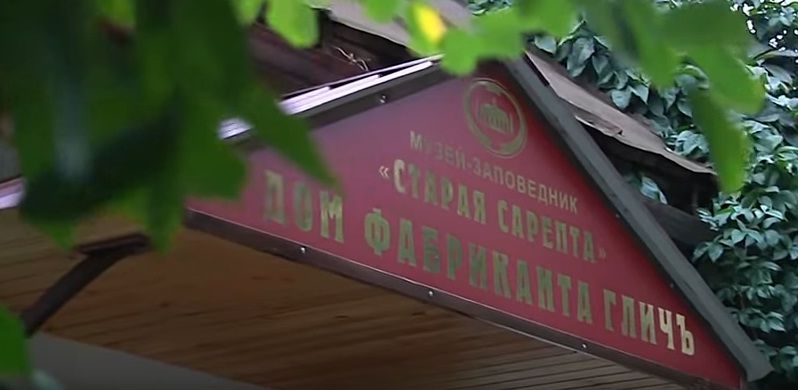
The Sarepta reserve is also interesting in that the first water supply system of the lower Volga region, the first elevator, and a kindergarten were created here. The colony had powerful knowledge in physics, medicine, production technology, chemistry.
In the historical reserve there is a hotel, a cafe of Sarepta cuisine and a German library. The largest in the region Sarepta church is equipped with a live sound organ without electronic support - the only one in the entire region.
A fascinating journey to the dungeon of the Old Sarepta of the 18th century will interest both a child and an adult.
The unique sculpture of Equilibrio has become a symbolic gift to the city from the sister city of Cologne. And modern interactive makes acquaintance with the museum complex exciting and dynamic, here you can:
- make your own mustard oil;
- paint Sarepta gingerbread;
- go in search of the treasures of the "Old Sarepta";
- go through the quest room "Dungeon of the Alchemists".
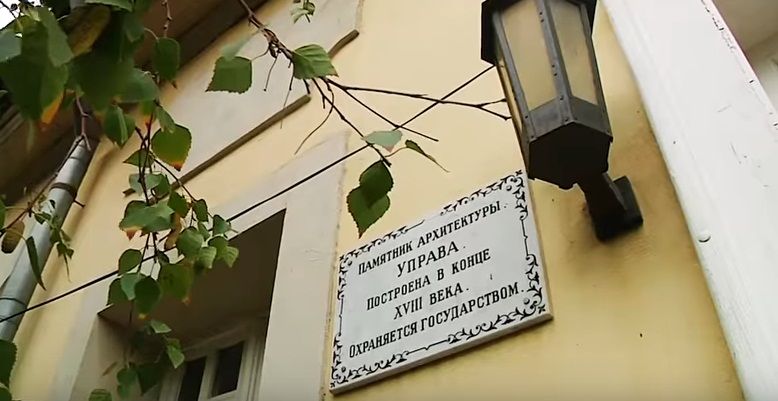
The experience of the theatrical tours of the museum was the first in the region.
On the territory of the museum there is a hotel where you can rent one of the five cozy, modern-equipped rooms.
- free bus to "Old Sarepta";
- organizing themed parties for visitors;
- visiting programs;
- souvenirs and their free delivery;
- virtual museum on the site;
- provision of a conference hall for events with a capacity of 100 people;
- on the territory in the cafe "Glich" you can try Sarepta cuisine, order lunch for a group.
- a large "dispersion" of buildings throughout the territory.
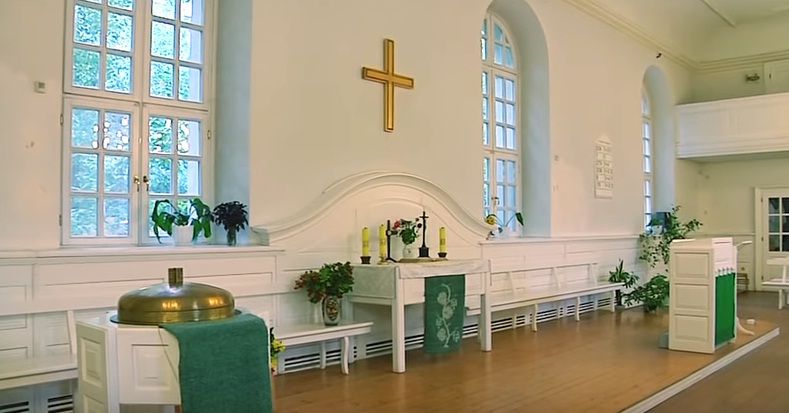
organizational information
Holiday programs:
| Program | Duration, minutes | Price, child ticket, adult, rubles |
|---|---|---|
| Christmas miracle | 70 | 150 |
| Christmas walk | 90 | 300/350 |
| Secrets of Holy Evenings | 90 | 300 |
The sightseeing tour passes through 10 museum halls, to the Lutheran church and the dungeon.
| Sightseeing tour, 1 hour | Price |
|---|---|
| adults | 300 |
| pensioners, students | 250 |
| children from 6 years old | 200 |
http://sareptamuseum.ru/400026, Volgograd, Krasnoarmeysky district, st.Abundant, 10
☎ 8 (8442) 67-02-34, 8-937-567-51-90
Volgograd Planetarium
The Star House of the City is a cultural and educational center that invites guests to visit the Star Hall with its visual aids and exhibits. The apparatus "Great Zeiss" will recreate a realistic stellar picture on the dome, an experienced guide-astronomer will reveal the secret of celestial bodies and processes.
The observatory invites stargazers to night and daytime astronomical observations.
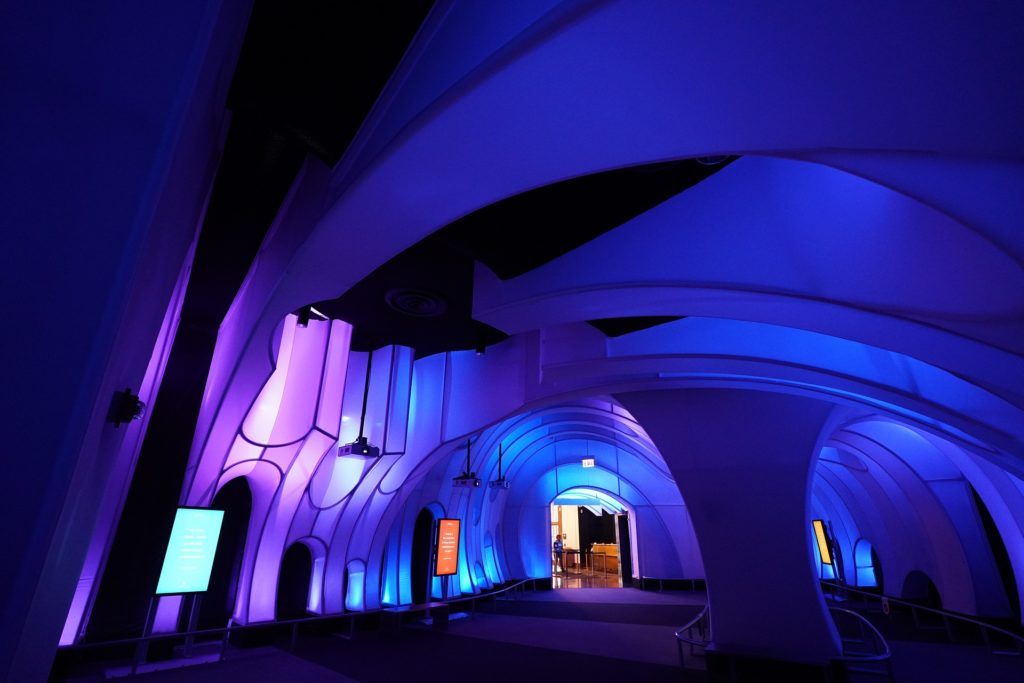 The planetarium was donated by the workers of socialist Germany to the 70th anniversary of Stalin I.V.
The planetarium was donated by the workers of socialist Germany to the 70th anniversary of Stalin I.V.
It has become a symbol of friendship and the peoples of both countries and their desire for technological progress. The construction was carried out by the workers of "Stalingradkultstroy" at an accelerated pace, and the opening of the planetarium was solemnly held on September 19, 1954. Guests came from all over the world, today the planetarium remains one of the best in Russia and is listed among the 8 best planetariums in the world.
- a wide variety of programs for all ages;
- conducting an experiment;
- the presence of a circle.
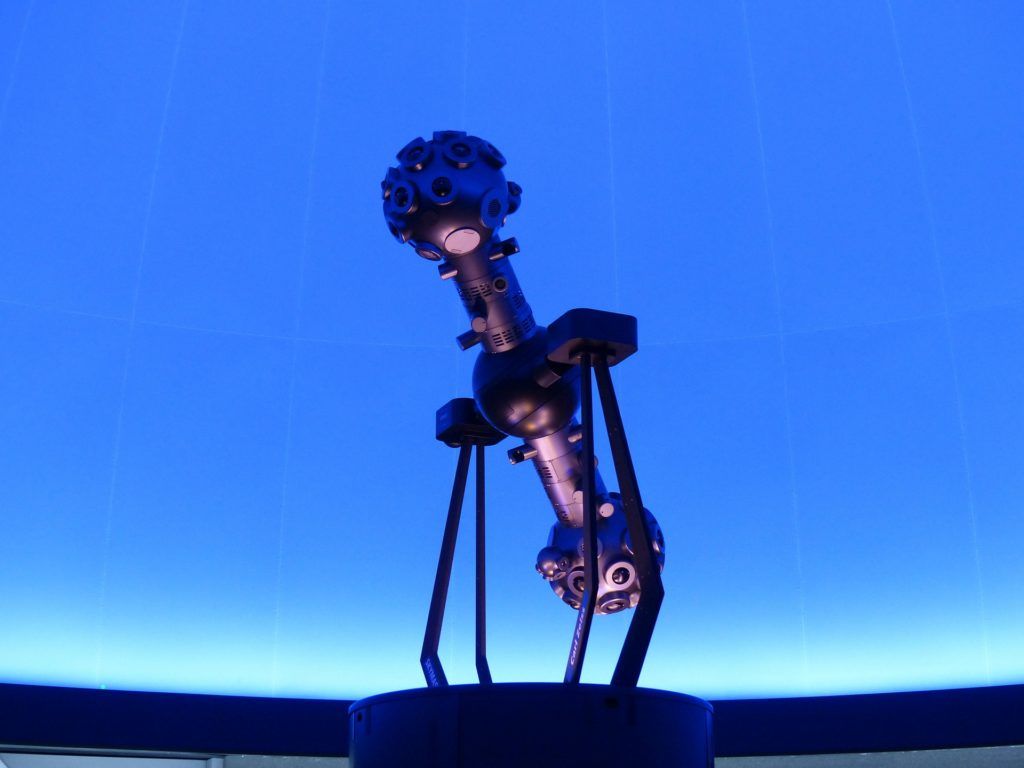
- no discounts for senior citizens.
organizational information
Visit cost:
| Sightseeing tour, 1 hour | price, rub. |
|---|---|
| adults | 300 |
| children from 6 years old | 200 |
Volgograd, st. Gagarin-14
Inquiries, applications: ☎ 24-18-72
Marketing and advertising: ☎ 24-18-69; 24-18-80
http://volgogradplanetarium.ru/sessions
e-mail for applications: ;
Einstein Entertaining Science Museum
The museum is an amazing journey into the world of physical experiments and discoveries. Guests are given the opportunity to become an experimental physicist for a while. The exhibition is equally entertaining for children and adults.
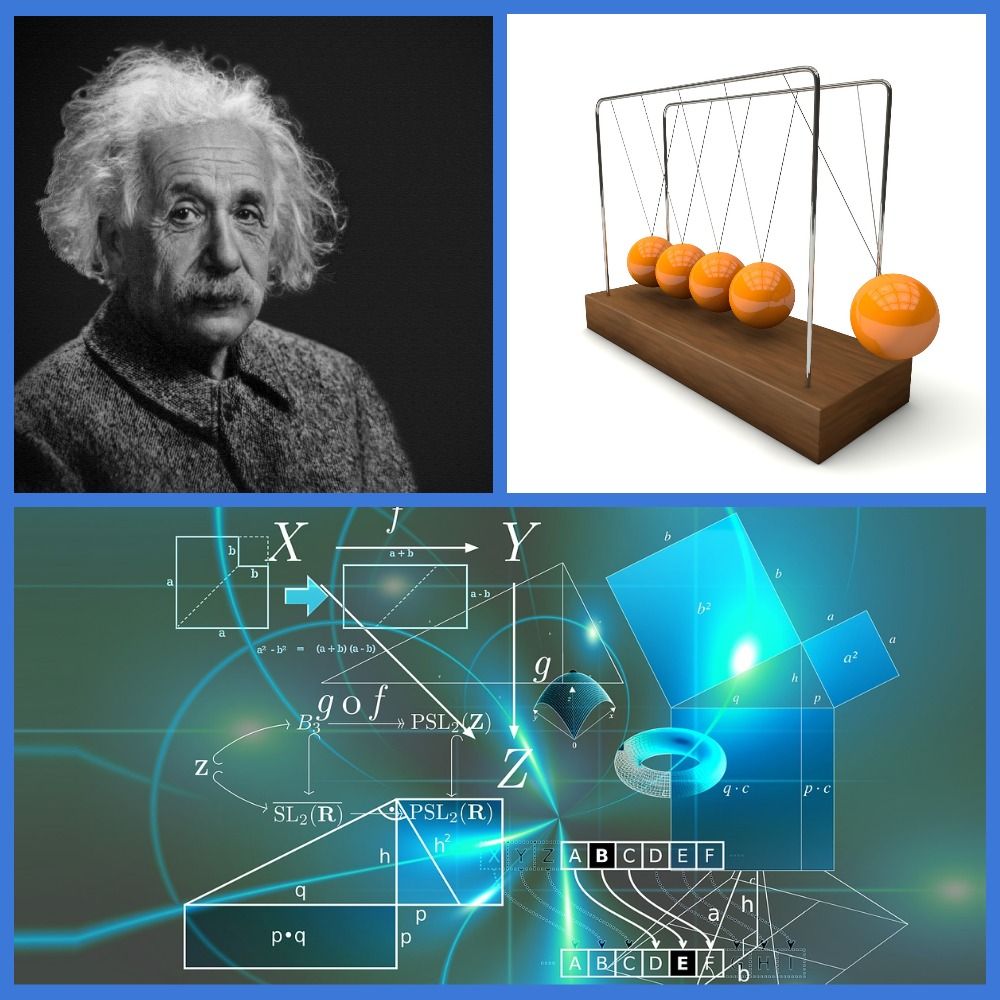
- popularity;
- demand;
- brilliant interactive solution.
- the ticket price is above average.
organizational information
Visit cost:
| Visitor category | Price |
|---|---|
| Children under three years old | is free |
| Child ticket (3 - 16 years old) | 350 rubles |
| Adult ticket (16 years+) | 380 rubles |
| DISCOUNTS AND SPECIAL OFFERS | |
| Family ticket (parents and 2 children under 16) | 1200 rubles |
| Large families (parents and 3 ++ children under 16) | |
| The discount is provided for tickets worth 350 rubles. and 380 rubles. | 35% discount |
| students | 25% discount |
| Veterans of WWII and military operations | is free |
| Disabled persons of all groups, pensioners | 10% discount |
Volgograd, Lenina Avenue, 70
☎ 33-33-35
Group applications: ☎ 8-961-688-55-58
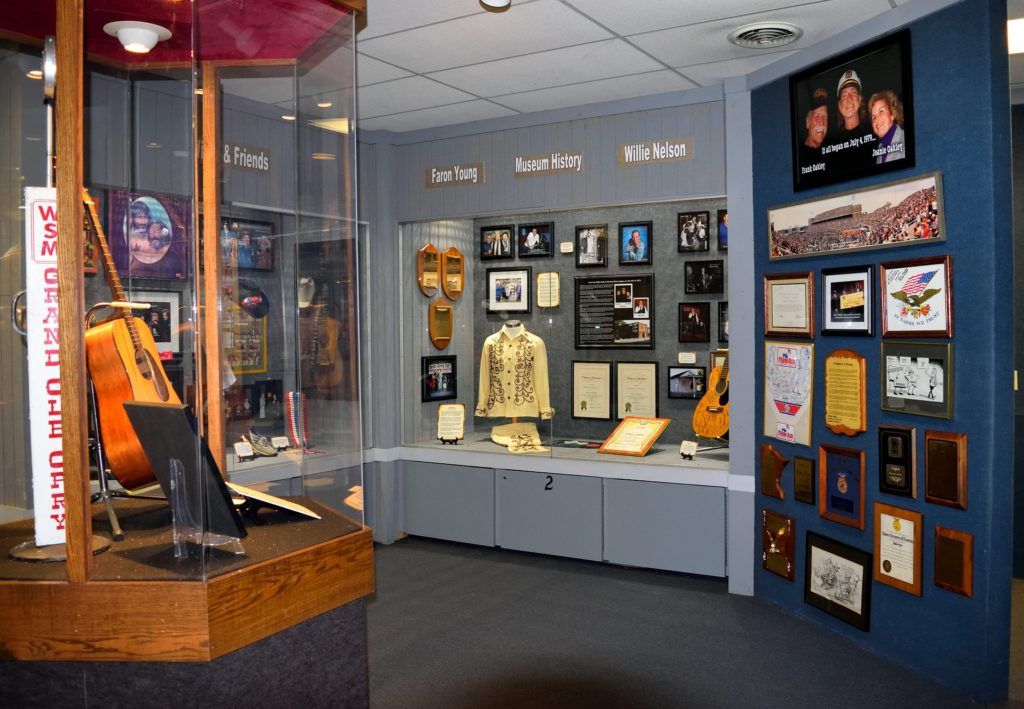
It is easy to please yourself with new knowledge, a new sense of events and things, to plunge into previously unfamiliar pages of history and culture. You just need to go to the museum.
new entries
Categories
Useful
Popular Articles
-

Top ranking of the best and cheapest scooters up to 50cc in 2022
Views: 131649 -

Rating of the best soundproofing materials for an apartment in 2022
Views: 127687 -

Rating of cheap analogues of expensive medicines for flu and colds for 2022
Views: 124516 -

The best men's sneakers in 2022
Views: 124030 -

The Best Complex Vitamins in 2022
Views: 121937 -

Top ranking of the best smartwatches 2022 - price-quality ratio
Views: 114978 -

The best paint for gray hair - top rating 2022
Views: 113393 -

Ranking of the best wood paints for interior work in 2022
Views: 110317 -

Rating of the best spinning reels in 2022
Views: 105326 -

Ranking of the best sex dolls for men for 2022
Views: 104362 -

Ranking of the best action cameras from China in 2022
Views: 102214 -

The most effective calcium preparations for adults and children in 2022
Views: 102010
